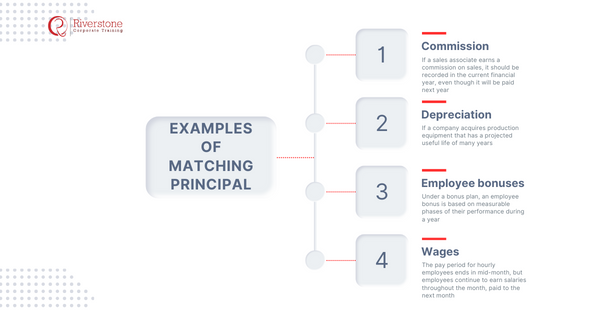A Practical Guide to Matching Principle.
The matching principle is one of the simple underlying guidelines in accounting. The matching principle is a basic accounting principle followed to ensure uniformity in an organization’s financial statements: i.e., the income statement, balance sheet, etc. The matching principle leads the organization to report items of expenditure on the income statement in the period in which the revenues are recorded.
Additionally, it results in liability to perform on the balance sheet to balance the calculated accounting period. The matching principle is related to the accrual basis of accounting and entry adjustments. If an expense is not interlinked to revenues, the payment should report on the balance sheet in the accounting period. If the benefit of a cost is not identified, it should be charged to the expense directly.
The matching principle directly related to revenues and expenses should be matched in the same period. So, a payment should be recorded in the same period as the corresponding revenue. The matching concept is a vital concept for companies for the sake of reporting their financial results correctly. Its primary purpose is to avoid any possibility of misstatement of profits for a period.
Net profits earned = Produced revenues – Earned expenditures
Benefits of the matching principle
The matching principle is a system that presents more specific accountability of an organization working from the balance sheet. Stakeholders classically want a smooth and normalized income statement. Where expenses and revenues are tied together and different from being lumpy and disconnected.
By matching all the terms together, stakeholders get a proper sense of genuine interest and economics of the business. It is essential to look at the cash flow statement in combination with the income statement.
 Examples of matching principal
Examples of matching principal
There are several examples of the matching principle:
- Commission
If a sales associate earns a commission on sales, it should be recorded in the current financial year, even though it will be paid next year. The commission should be recorded in the same fiscal year when those specific sales are recorded.
- Depreciation
If a company acquires production equipment that has a projected useful life of many years. It should depreciate the cost of equipment in proportion to its valuable years and not all in one year.
- Employee bonusesUnder a bonus plan, an employee bonus is based on measurable phases of their performance during a year. An organization should record the bonus expense during the year when the employee earned it.
- Wages
The pay period for hourly employees ends in mid-month, but employees continue to earn salaries throughout the month, paid to the next month. The employer should record an expense in the first month for those wages received on the last day of the month.
Matching principle’s benefits
Many businesses use financial elements to benefit from the matching principle. Long-Term assets experience depreciation, and the matching policy ensures that matching is extensive and appropriate to balance out the profit flow. This practice is essential for those understanding financial statements for business owners, as it directly impacts how revenues and expenses are aligned over accounting periods to provide an accurate financial picture.
The matching principle allows us to be distributed and match assets throughout their useful life and to balance the cost in a given period.
Applying the Matching Principle in Singaporean Businesses:
Prepare a set of case studies or comprehensive examples representing the way the principle of matching is implemented in the different industries of Singapore. This would be a situation of service-based entities, manufacturing organizations, or a retail store, which would show how income and their incurred expenses are recorded under an appropriate accounting period. By applying business scenarios and possibly referring to specific Singapore Financial Reporting Standards (SFRS) where relevant—such as biological asset valuation standards under SFRS for agriculture-based businesses, or business segment classification for listed companies under SFRS 108—you will be giving the reader very practical and to-the-point information and helping them understand this basic concept in accounting.
Conclusion
The matching principle is important because the proper matching of revenues and expenses gives a more precise appraisal of the results of workings and operations and helps avoid misrepresentation of the industry’s financial position. It helps to improve the quality of the financial statements. This concept is a fundamental component taught in a comprehensive finance course for working professionals, as well as emphasized in any credible financial modeling certification program for finance professionals, ensuring learners grasp how accurate timing of revenues and expenses impacts financial integrity and strategic decision-making.

 Examples of matching principal
Examples of matching principal